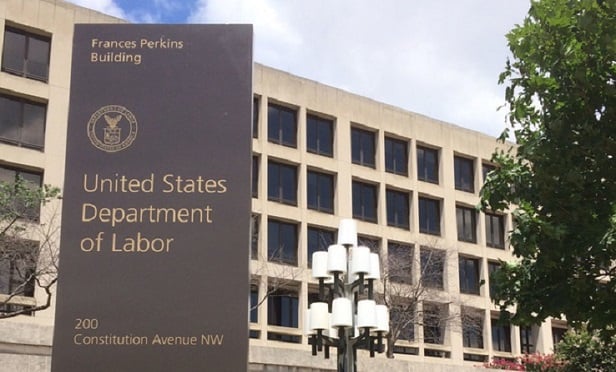 Should midterm elections bring more Democrats into office before a rule is put in place, the appeal of the injunction could be reinstated and the original Obama-era rule put in place. (Photo by Mike Scarcella/ALM.)
Should midterm elections bring more Democrats into office before a rule is put in place, the appeal of the injunction could be reinstated and the original Obama-era rule put in place. (Photo by Mike Scarcella/ALM.)
It may have been the target of a permanent injunction against implementation, but depending on how quickly the Department of Labor acts (or doesn't), midterm elections could upend the process on the overtime rule.
According to a report from the Society for Human Resource Management, the Obama-era rule—which would require the payment of overtime for all those making $913 per week (that translates to an annualized $47,476)—could come back to life if the DOL doesn't issue its retake on the rule before the elections.
Recommended For You
Just 10 days before it was supposed to go into effect on December 1, 2016, a Texas district court issued a nationwide preliminary injunction in the wake of a lawsuit by the business community challenging the rule. That was followed by a permanent injunction on August 31, 2017, and while the DOL challenged the injunction, it went on hold under the Trump administration.
That means that, although the DOL has considered a lower level of pay as the trigger for OT, should midterm elections bring more Democrats into office and particularly if they should retake the White House in 2020 before a rule is put in place, the appeal of the injunction could be reinstated under Democratic control and the original Obama-era rule put in place.
That's according to an HRDive report, which points out that while the old $455 per week ($23,660 per year) salary threshold remains in effect, DOL is still considering an update, although a lower one. It's already held a comment period on the retake of the rule in the wake of the injunction, and has said in its regulatory agenda that it expects to propose a rule in October.
But should Democrats rise, all bets could be off. Tammy McCutchen, a principal in law firm Littler Mendelson's Washington, D.C., office, is quoted in the report saying, "If Democrats win the presidency without a new final rule in place, expect the new administration's DOL to vigorously defend the [previously] proposed salary level."
Another wildcard is that the injunction has also raised the question of whether DOL has the ability to set a salary threshold at all. That could not only pose a problem for DOL's future overtime rule but also its broader authority to regulate.
DOL has been slow to act, partly because confirmation is delayed on the nominations of Cheryl Stanton as wage and hour administrator and Patrick Pizzella as deputy DOL secretary, among other positions. Their presence would help to "spearhead a revised overtime rule with a less-severe salary-threshold increase," according to the report.
Two possibilities under the Trump administration, should a new rule be proposed, are a revised salary threshold of $31,824 annualized, or $612 per week, if the 2004 methodology—the last time the rule was updated—were applied, or instead, a new salary level of $30,576 annualized, or $588 per week, if the DOL were to increase the threshold by the level of inflation.
The unimplemented Obama-era rule not only raised the salary threshold for the overtime exemption, but also automatically adjusted the threshold every three years based on changes to the earnings of full-time salaried workers in the lowest-wage census region.
McCutchen warned businesses not to discard any implementation plans for the 2016 regulation, just in case a confluence of election results, changes and delays lead to the implementation of the original rule.
© 2025 ALM Global, LLC, All Rights Reserved. Request academic re-use from www.copyright.com. All other uses, submit a request to [email protected]. For more information visit Asset & Logo Licensing.






